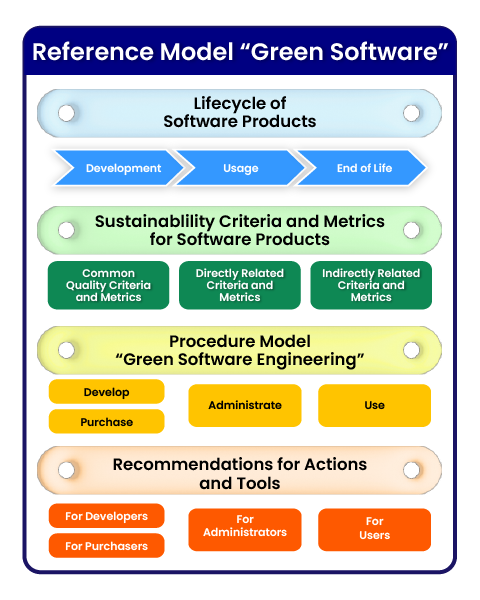We live in the digital age where innovations and transformations in technology have fundamentally influenced the way we operate at both the local as well as the global level.
Our previous blog, Sustainability as a Strategic Imperative in Product Engineering discussed the salient features as to why organizations need to embrace sustainability in their product engineering cycle and its results.
This blog details how green coding within the IT sector can help minimize the carbon footprints to realize a more sustainable future.
Did you know?
Would you like to know more about how to lessen the digital footprints? Read further to understand the emerging field called green software engineering along with sustainable software development that can have a meaningful impact on our society and the living environment.
History of the Green Software Engineering
The software used in computers to get us from point A to point B has a substantial impact on the environment. So far studies focused on minimizing the carbon emissions from the hardware, but little effort was spent on understanding the greenness of software products especially from a sustainability perspective. A look at the data [2] at the turn of the decade is self-explanatory and shows how much more we need to work towards a more sustainable future.
The pandemic of 2019 led to greater digital interactions, and which led to the founding of the Green Software Foundation [3], a non-profit organization established in 2021. Their main aim was to develop a network of “people, standards, tooling and best practices for green software”.
The Foundation developed a set of 8 Principles, now collated into 6 as shown in Fig. 1, that is quickly gaining momentum as the practical fundamentals can be applied to the Software Development Cycle.

The green computing focuses on the effective use of natural resources, supporting sustainability of resources.
It is a known fact that in everything we utilize software is a central component but what is little known is that it can affect the environment’s sustainability. Thus, how we utilize software is relevant to sustainability that we seek.
Green IT has been defined as “the study and practice of design, developing, using, and disposing of computers and peripherals, and servers effectively without affecting the environment” [4].
An interesting paper titled, Green Measurements for Software Product Based on Sustainability Dimensions by Komeil Raisian et al presented 3 dimensions within which software can be measured to be termed as green software: economic, social and environmental and which were further broken down into seven primary measurements associated with green elements: productivity, cost reduction, usability, employee support, tool support, energy efficiency, and resource efficiency. Their study concluded that without a suitable green measurement model, the greenness of software products cannot be accomplished. The above measurements within the dimension’s framework, can offer a way to measure how green is the organizations software.
Also understanding where the software’s energy is consumed will help push for greater implementation of green coding. The 3 main areas [5] during the Software Development Cycle where maximum energy is likely to be consumed are:
- Infrastructure: IT infrastructure, including hardware and networks, needs energy to operate. Often, complex, or excessive infrastructure leads to wasteful energy use.
- Processing: The complexity and size of software directly affect its energy consumption during operation.
- DevOps: The coding process involves writing and processing code, requiring energy. If this energy isn’t from renewable sources, it produces carbon emissions. More extensive coding translates to higher energy use and emissions.
Green Coding
Green coding refers to programming sustainable code written with the specific purpose of minimizing the energy consumption of the developed software. Less energy consumption means less waste, minimizing harmful effects and benefiting the environment. Green coding practices include optimizing algorithms, reducing code complexity, and minimizing the use of resources [5].
As a beginner in coding, many coders write code which turns to be messy, long, and inefficient. That’s the learning process. As we grow as coders, the importance of refactoring becomes crucial in terms of efficiency and energy utilized [6]. Refactoring helps improve readability of the code and its reusability and reduces the cost of its maintainability in the long run. However, software developers would require efficient tools against which they can test their applications and its usage of energy [7]. Moreover, the energy can vary outside their control too in terms of network congestion, user’s screen brightness, etc.
Sustainability through Green Coding
The concept of Green Coding is inspired by Green Computing, which is concerned with, “responsible design, manufacturing, and disposal of physical computing systems”.
Green coding is also said to include green programming known to enhance the energy efficiency of multi-core processors. It also incorporates green IT practices, such as virtualization and containerization, to reduce the number of physical servers and breaking down of complex software into smaller microservices. And importantly, the use of cloud-based operations supports minimization of energy consumption.
Here are a few points on how we can achieve sustainability through green coding
- Use automatic server shutdowns for under-utilized servers
- Redistribute their workload to conserve energy
- Optimize Code performance
- Avoid recurring work such as recompiling
- Reduce File size
- Lower network usage
- Make use of efficient algorithm usage
- Ensure better compilers which are virtualization ready
- Create more efficient code blocks for the target platform
- Design applications with optimum levels of micro-services
- Automate repetitive tasks
On a more behavioral perspective:
- Focus on collaboration and flexibility
- Leverage automation and efficient workflows
- Use programming languages that are more energy-efficient [8]: Python, Ruby, PhP, etc. are less efficient than Java, C++, Rust, and C
- Use less logging lines
- Introduce user energy saving mode into the apps designed
- Follow the GREENSOFT MODEL [9] as shown in Fig.2

Benefits of Green Coding
Benefits that Green Coding brings to every stakeholder in the IT sector
| Action Taken | What It impacts | Results |
| Reduce energy consumption | Reduces energy costs | Financial sustainability against the backdrop of high volatile energy prices and cost-efficiency |
| Work towards sustainable goals | Net-zero emissions | Enhances Corporate Social Responsibility (CSR) of the company proving commitment to Social Development Goals (SDG) |
| Enable Sustainable and Digital Transformation | Enhanced Operating Margins | Enhanced collaborations attracting environmentally conscious clients, partners and investors |
| Culture Change among developers and programmers | Simplification and streamlining of complex infrastructures | Saving of time, increased productivity, and improved efficiency among employees |
By leveraging and utilizing Green Coding and introducing a few changes within the organization:
- Leads to fewer processor executions and less memory usage ensuring faster response time
- Prevents bloated and inflated code which drains resources: clean and minimum code is the quintessential of great coders
- Leverages sustainable energy efficient data centers: Check out how much energy data centers consume [10]
- Leverages Green Artificial Intelligence (AI) for energy use optimization: Advocate for Green AI versus the Red AI [11]
- Switching to green hosting providers and Cloud based platforms that are committed to carbon neutrality
- Measuring & Monitoring: From design to development phase to product, a sustainability estimates for every feature and step needs recording which can be continuously measured as work progresses. This helps to know the loopholes and where and what needs trimming down.
Conclusion
Software Industry should adopt sustainability for a greener and more balanced future. Green software will help large enterprises to meet their ESG targets, which is an increasingly important performance measure for all stakeholders including investors.
Calsoft, being a Technology-First company and a pioneer in software product engineering services, takes on the responsibility and commitment to be the change to contribute towards building a safer future in the IT products and services for a sustainable tomorrow.
References:
- https://hbr.org/2020/09/how-green-is-your-software
- https://techmonitor.ai/focus/tech-industry-carbon-emissions-progress
- Green Software Foundation | GSF
- https://www.techtarget.com/searchcio/definition/green-IT-green-information- Technology
- Sustainable Software Development: What is It, Best Practices | Beetroot
- https://dl.acm.org/doi/10.1145/2652524.2652538
- https://www.sciencedirect.com/science/article/abs/pii/S2210537922000063
- Energy Efficiency across Programming Languages (uminho.pt)
- https://www.umwelt-campus.de/fileadmin/Umwelt-Campus/Greensoft/The_GREENSOFT_Model_A_reference_model_fo.pdf
- https://www.techtarget.com/searchdatacenter/tip/How-much-energy-do-data-centers-consume
- 1907.10597.pdf (arxiv.org)


